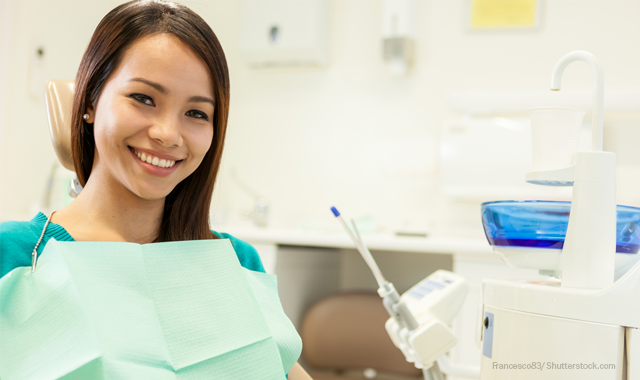How to increase case acceptance with preconditioning
Patient interactions should involve your whole office, from the decorations to the staff.

Presenting your patient with a treatment plan is one thing - but getting them to accept it is the tricky part. If they don’t say yes, all your careful marketing efforts have failed. Closing the deal is especially difficult with newer patients who have not had time to build a trusting relationship with you. This is where preconditioning can save the day.
Preconditioning starts before a new patient steps into your office. Referrals are the best source of new patients. They are coming in because someone they trust told them that you are a great dentist. This paves the way for a fast and easy comfort level.
With external advertising, it’s a lot tougher. You want the new patient to walk through the door already believing that you are an excellent dentist. Start with top-rate ads if you choose to advertise, and a distinctive web site that projects the expert touch. Train your staff to answer the phones with a warm and inviting tone. Upon arrival, it’s imperative the front desk staff greets them with enthusiasm and a big, friendly smile.

While waiting in your reception area, give them something to do. I recommend you place a portfolio album with patient before and after pictures of a variety of services you provide. You want the patient to think: “I want Dr. Smith to do that to my teeth!” It never hurts to have some family pictures in the front of the book to add the personal touch. I have several of those books in my waiting room and every day I see patients flipping through them. It’s always a helpful aid when I am presenting a treatment plan and the patient says, “Yes, I saw that in your book out front.” There are also some excellent educational and promotional programming available to display on a television. You can also display posters with beautiful results of your cosmetic work.
It is helpful to plant some seeds with your registration and health history form. Asking questions like “Are you happy with your ability to chew your food properly?” can get them thinking about proper function. “Rate your smile on a scale of 1 to 10 (10 being perfect)” and “On a scale from 1 to 10, what would you like your smile to be?” can get the wheels turning towards considering cosmetic treatment. These questions can also give you a good heads-up on the patient’s thought process and helps you steer them in a direction that they value as important.
Once the patient is back in a treatment room, it’s time for the staff to spring into action. Staff members need to jump at any opportunity to brag about your wonderful dentistry and the long-lasting, quality treatments you offer. Much easier than having to brag about yourself!
The hygienist has more time to build rapport with your new patient. They are able to spot periodontal and restorative problems while cleaning the teeth and are able to point these things out to the patient ahead of time. This is the perfect time to talk the doctor up. Gushing (in a controlled and believable manner) about the high quality and gentle work that Dr. Smith performs can go a long way in making the patient much more receptive to the doctor’s recommendations.
Using the tip-offs from the cosmetic questionnaire, the hygienist can get a handle on the patient’s concerns. From there, they can convey how absolutely beautiful Dr. Smith’s cosmetic care is and how ecstatic the patients have been after receiving a smile makeover at your office. They shouldn’t get squeamish about using superlatives to describe the doctor’s work. New patients need to know you are the best, and that needs to come from your staff, not you.
When the hygienist is performing a preliminary exam, they can talk about the possible need for scaling and root planing if there is periodontal disease present. If there is a fractured cusp, they can mention that the doctor may recommend a crown. If there are any missing teeth, the hygienist can touch upon the need for implants or other prosthetics. By priming the patient with these tidbits, they will be more receptive to your recommendations.
The same goes for the assistants when they are preparing an emergency patient. While listening to the patient’s concerns, it’s a great time to throw in that they are in experienced hands with the doctor and will receive the best of care. It never hurts to have them send a subliminal message that the doctor always recommends treatment that is in the patient’s best, long term interest and that it is a good idea for them to follow the doctor’s recommendations.
Before you walk into the operatory, have the staff member fill you in with the patient’s hot buttons. Is this patient interested in improving their smile? Would they like to function better? What are the primary concerns that the patient has about their oral health? This vital information helps tremendously when it comes time to formulate the treatment plan.
Proper preconditioning by the staff - before you even meet the patient - can lead to more case acceptance. This will greatly shorten your consultation time and help you build a trusting relationship with your patient because they’ll already know that you are the best.